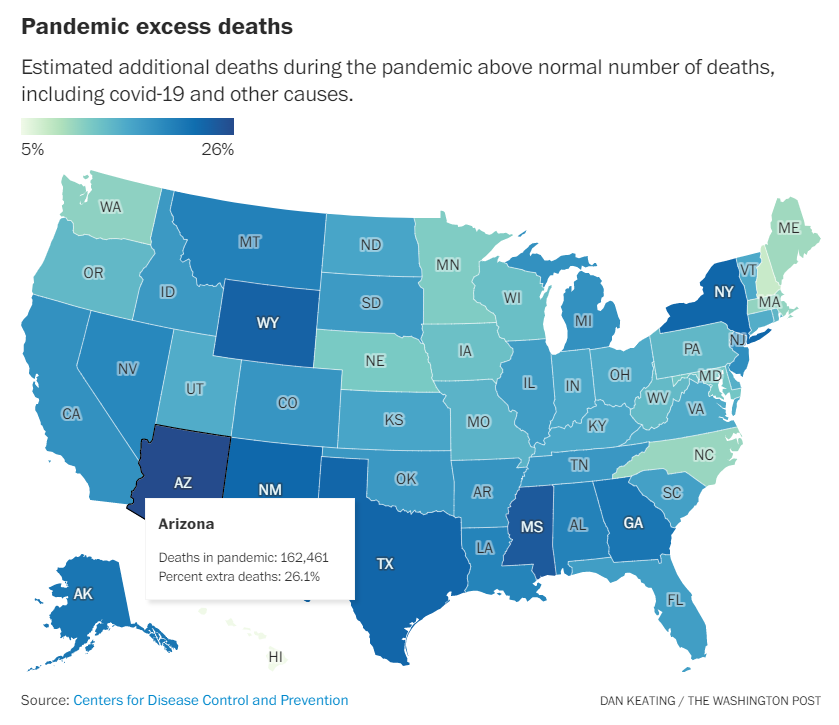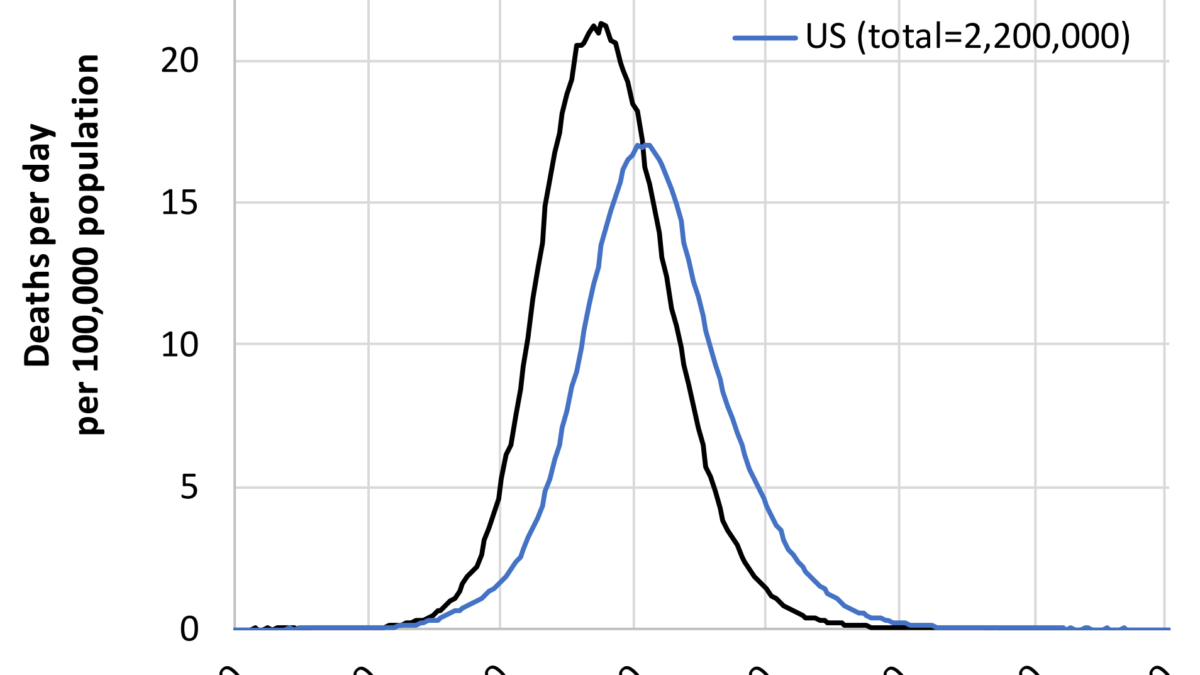U.S. “excess deaths” during pandemic surpass 1 million, with Covid killing most but other diseases adding to the toll, CDC says – “We did not handle it well. That’s glaringly obvious.”

By Joel Achenbach
15 February 2022
(Washington Post) – The United States has recorded more than 1 million “excess deaths” since the start of the pandemic, government mortality statistics show, a toll that exceeds the officially documented lethality of the coronavirus and captures the broad consequences of the health crisis that has entered its third year.
The excess-deaths figure surpassed the milestone last week, reaching 1,023,916, according to Robert Anderson, chief of the mortality statistics branch of the Centers for Disease Control and Prevention’s National Center for Health Statistics. The center updates its estimate weekly.
Although the vast majority of the excess deaths are due to the virus, the CDC mortality records also expose swollen numbers of deaths from heart disease, hypertension, dementia and other ailments across two years of pandemic misery.
“We’ve never seen anything like it,” Anderson said.
In 2019, before the pandemic, the CDC recorded 2.8 million deaths. But in 2020 and 2021, as the virus spread through the population, the country recorded roughly a half-million deaths each year in excess of the norm.
The virus emerged in China in late 2019 and began killing people there in January 2020. It did not spread significantly in the United States until that February, and it wasn’t until the final week of March 2020 that it began to send the excess-deaths metric soaring.
The CDC’s excess deaths tracker shows in detail the speed and intensity of that initial wave: Deaths soared more than 40 percent above normal in the United States in the second week of April 2020.
The lethality in early April was concentrated in a few hot spots; for example, deaths in New York City were seven times the norm, but some regions had minimal change in mortality for many months.
The CDC mortality branch’s official count of deaths from covid-19 stood at 911,145 as of Tuesday. (The mortality researchers rely on death certificates, and that tally can be slightly lower than other CDC or academic trackers that rely on data from other sources.)
Anderson said 91 percent of the deaths from covid-19 tracked by his unit were attributed directly to the disease. In the other 9 percent of deaths, covid-19 was listed as a contributing factor but not the primary cause.
The CDC documented 13 other types of non-covid causes of death that were inflated during the pandemic compared with historical trends starting in 2013. For example, since the start of the pandemic, the category of ischemic heart disease has recorded an additional 30,000 deaths beyond what would be expected. Deaths from hypertensive disease were nearly 62,000 higher than expected. […]
“The bulk of the excess deaths were a direct result of covid-19 infections, but pandemics have major cascading impacts on all aspects of society,” said Amesh Adalja, senior scholar at the Johns Hopkins Center for Health Security. […]

Steven H. Woolf, director emeritus of the Center on Society and Health at Virginia Commonwealth University, said Tuesday that his published studies on excess deaths during the pandemic have consistently shown that 80 to 85 percent were caused by the virus directly. The remainder can largely be attributed to disruptions caused by the pandemic, he said.
“The economic and psychological stresses of the pandemic take their toll,” Woolf said.
The pandemic exacerbated existing health disparities and led to much higher mortality among Black and Hispanic people, particularly early in the crisis, research has shown. A Washington Post analysis last year found that, at the time, in the 40-to-64 age bracket, 1 in 480 Black people, 1 in 390 Hispanic people and 1 in 240 Native Americans had died during the pandemic, compared with 1 in 1,300 White people and Asian people.
The United States on the whole has an unusually high rate of chronic health conditions, such as obesity, diabetes and heart disease, and has a long-recognized “health disadvantage” compared with other wealthy nations.
That disadvantage was exacerbated by a weak and scattershot response to the pandemic, Woolf said. Other countries that reacted more quickly or took more aggressive postures to control viral spread early on were able to limit their death toll as well as long-term economic impacts, he said.
“We did not handle it well. That’s glaringly obvious,” he said. “The other countries got hit by the same virus, but no country has experienced the number of deaths we have, and even if you adjust for population, we are among the highest in the world.” [more]


